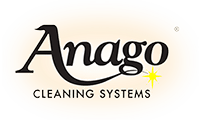
The floors of your commercial space say a lot about your environment. Not only can a shiny, smooth surface leave a long-lasting good impression on clients, customers, and employees, but it also provides a professional and sleek appearance for your business overall. To restore your commercial floors to their former glory, you’ll need a process you can rely on.
Floor buffing and polishing are two go-to methods that ensure your commercial flooring receives the gloss and luster these processes can create. Both methods require specialized equipment to get the floors nice and shiny, but they also have their own functions as well.
You may be thinking to yourself, “What is the difference between buffing and polishing a floor?” While these methods can be used interchangeably, they also share similar features and key differences in their results.
Floor Buffing
Floor buffing is a process of cleaning in which polishing pads are used to restore the smooth appearance of your commercial floors. A buffing machine has rotating pads attached to its bottom that remove dirt, scratches, and nicks from the floor’s surface. The floor buffing machine strips away the top layer of flooring to create an even and smooth appearance.
Buffing can be done in one of two ways: Spray or dry. Spray buffing uses a specialized liquid that buffs away dirt, scuffs, and nicks. These buffers can go up to 1000 rpm and are the most common floor buffing option used. Dry buffers work at a higher speed and are fast enough to smooth out the flooring and remove scuffs. Unlike spray buffing, these machines can go over 1000 rpm and are often used by professional cleaning experts.
You can buff hard surfaces, such as tile, stone, and concrete floors. While floor buffing machines can give your commercial floor a nice shine, they won’t get the same level of gloss that polishing provides.
Floor Polishing
The difference between buffing and polishing is that when you’re looking to achieve maximum gloss and shine, you’ll need the force of a high-speed floor polishing machine. Floor polishing, also known as burnishing, is a floor-care method that’s typically done after floor buffing.
While it’s a harsher process, burnishing/polishing machines work at a much higher speed to achieve a polished and glossy surface that is popular in most commercial spaces. A burnishing machine can spin at a much higher 1500-2000 rpm. The quickness and weight of the machine create more pressure that’s useful in smoothing out uneven surfaces by removing bumps, chips, or dents on your floor.
Much like buffing, you’ll find the benefits of floor polishing/burnishing work well with stone, tile, and concrete floors. However, most customers will agree that its high-gloss features work even better with marble and laminate surfaces.
Buffing and Polishing Uses
Longevity
While buffing and polishing services are best known for bringing out the shine on your floors, they can also contribute to their overall longevity. You can extend the lifespan of your floors by removing dirt and grime and smoothing out the wear and tear of your flooring.
The Overall Differences
The biggest difference between buffing and polishing is that floor polishing is more effective at getting rid of scratches or dents on your commercial flooring. Both methods use similar machines, but a floor burnishing/polishing machine uses rotating pads that move at a much faster pace. However, either option is reliable for deep cleaning your floor and improving the appearance of your business.
Knowing how to operate a floor buffing or polishing machine takes a lot of practice. These services require the skill and experience of knowledgeable professionals. That’s why Anago Cleaning Systems’ franchisees specialize in floor care for commercial spaces. If you’re looking for dependable buffing and polishing that make a difference, contact the high-quality janitorial services of Anago today.
